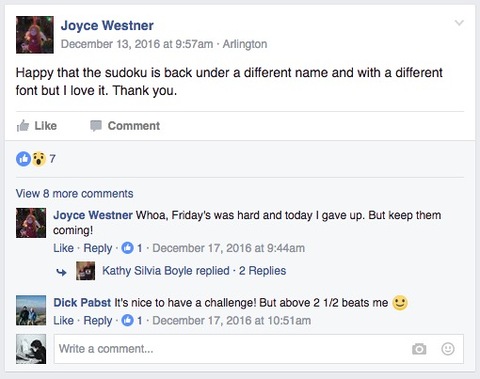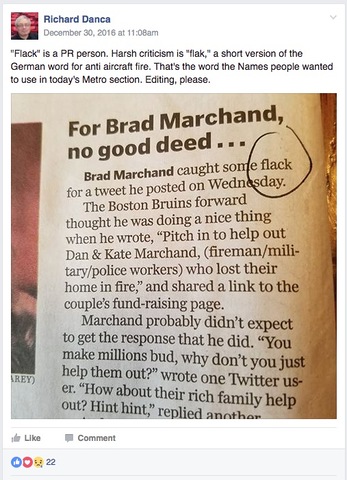
“We’ve squeezed all the water out of the Facebook page stone — where the pages are great and can generate a ton of traffic,” Matt Karolian, director of audience engagement at the Globe, said. “But there’s a whole bunch of Facebook that isn’t pages, that people use extensively but publications aren’t using extensively. And there’s untapped opportunity in Facebook groups.”
The Globe’s Facebook group for its subscribers, launched last month, now has around 2,000 members who chatter away in the group about everything from typos to news stories to the difficulty of puzzles. Moderators approve user posts, but members are a self-selecting group anyway, and the discussion is civil (“we’ve only not approved a post if it’s spam, or promotional”). Globe reporters are part of the group, so when their stories come up for discussion — or receive compliments — the story’s original author can jump right into the comments. People from the customer service team are also on hand to address circulation issues.“Even more interesting are just the conversations occurring between the readers themselves,” Karolian said. “You used to be able to go to a Facebook page [and] write on their wall, but that’s been hidden. This has become a nice way to reignite reader-to-reader conversation.”
Though a little over a month old and still feeling out the most useful features to offer subscribers, the Globe’s Facebook group has proven to be remarkably active: An average post in the much smaller private subscribers group attracts about twice the number of comments as a post on the main page, according to Karolian.

There’s no simple way to match the Globe’s subscriber database with the group’s membership, Karolian said, but responses from a Google form survey put up during the earliest days of the project suggests that these subscribers are very involved in their communities, with most respondents indicating they were “involved in nonprofit/charity work.” The survey also suggested that those subscribers were most interested in politics, followed by sports.

“As we looked to what work we wanted to do in 2017 as it relates to Facebook, at what kind of new levers on Facebook we could start pulling, groups seemed a really obvious place for us,” Karolian said. “We could start with subscribers, who we know to be supremely engaged. Then there are opportunities over time to expand into different areas — could it make sense for us to do something around Boston sports? Local politics? Weather? Those sorts of things are where we have an opportunity to help generate and lead discussions around subject matters people care a lot about.”
The group could also be a place to source story ideas or to post large files, in the case of a story with lots of supplemental documents subscribers may be interested in perusing themselves.
Other publishers have developed Facebook groups for their readers around specific topics such as personal finance or books. Vox recently launched a closed Facebook group for Obamacare enrollees, which it has both used in its reporting and as a guide for the types of stories group members are interested in. Karolian said from poking around and talking to liaisons at Facebook, he was unaware of other subscriber-only groups run by similar-sized papers.

“For publishers who have a paywall, building as much value into the paywall as possible makes a lot of sense, and so far this group appears to be something of value. We want to be able to create more of these touchpoints for readers,” he said. “If other metro dailies could go ahead and do this as well, it would help us all have a much larger dataset to understand what’s successful, what isn’t.”
For now, the Globe’s subscriber group has only been shared as a link with subscribers and hasn’t been promoted elsewhere, so that the Globe can play around with ideas while the group remains a manageable size.